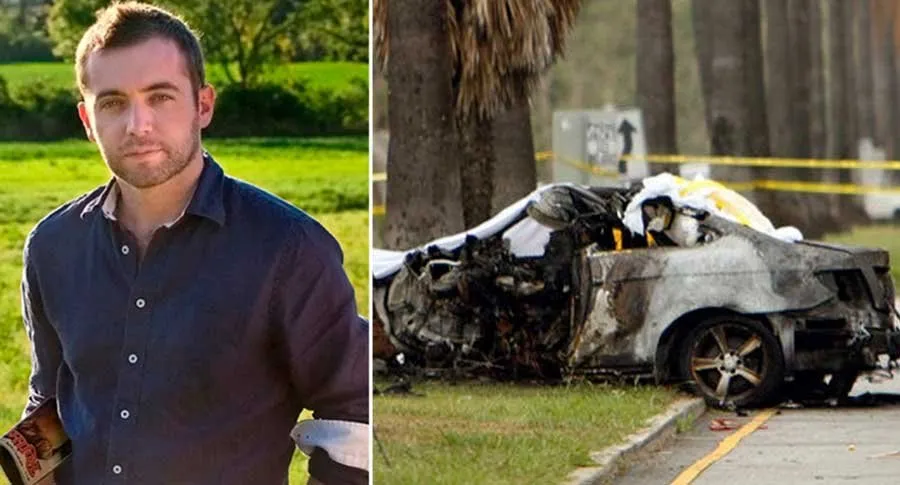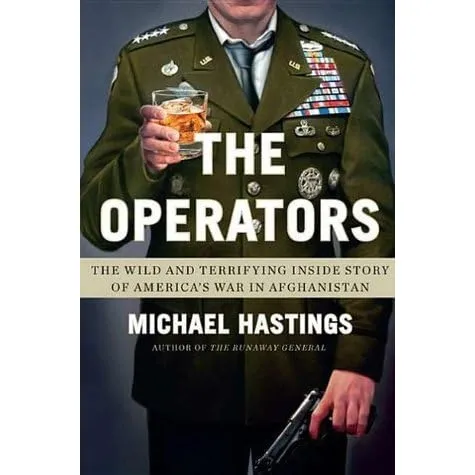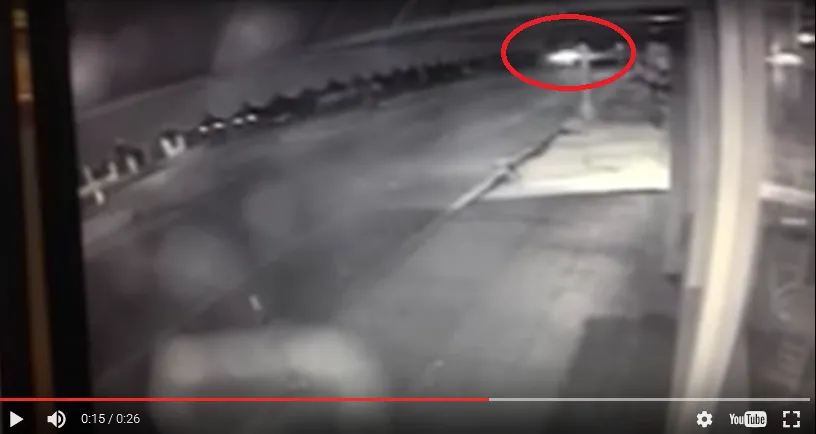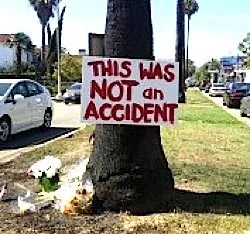
In the last five years around a dozen famous individuals died strangely during major U.S. government investigations. Andrew Breitbart, Monica Petersen, John Ashe, Antonin Scalia and Michael Hastings have all died of mysterious circumstances in the midst of major investigations into illicit activities of U.S. government agencies and officials. Almost all of them, interestingly enough, were specifically investigating the Clinton Foundation, the CIA and possible connections to human trafficking. In 2016 alone at least five, very similarly outspoken critics of the U.S. government died of mysterious circumstances.
The conclusion can easily be made, then, that simply trying to uncover the truth about the U.S. government can present real, physical risk to journalists and investigators involved.
I want to honor these brave men and women by reinvestigating their mysterious deaths individually and in-depth in the hopes of finding patterns and possibly even the real causes of death. I have already previously discussed the heart attack of Supreme Court Justice Antonin Scalia, and in this article would like to focus on Michael Hastings as the circumstances of his death have recently been discussed in relation to the findings of WikiLeaks' Vault 7 "Year Zero" leaks.
The CIA, as it would turn out, would have motive, means and opportunity to kill Michael Hastings with their ongoing surveillance program of Hastings as well as the ability to remotely hack Hastings' vehicle, a 2013 Mercedes C250 Coupé.
The Life

Michael Hastings was a well-known and respected journalist for Rolling Stone and Buzzfeed. His most influential work was done between 2008 and 2012, leading up to his death in a car crash in 2013. His work included notable investigative pieces on corruption and illicit activities within U.S. government agencies and institutions, in particular the U.S. Army, the Democratic Party and then-President Barack Obama.
One of his most controversial pieces was the book, The Operators, which disclosed dozens of hours worth of conversations between Michael Hastings and U.S. Army general Stanley McChrystal. In the book, Hastings mentions a conversation which took place between himself and members of McChrystal's staff before the book's release:
Hastings recounted conversations with some of McChrystal's staff members in the book, when during a party at which everyone was "totally shit faced", one asked him, "You’re not going to fuck us, are you?” and another stating, “We’ll hunt you down and kill you if we don’t like what you write”. Hastings interpreted the drunken comments as a joke.
Source: Wikipedia on The Operators
As it turns out, Hastings' reputation as an investigative journalist made him the target of a continued surveillance program by the FBI, and possibly even the CIA. An FBI file had been opened on Hastings in June 2012 to "memorialize controversial reporting by Rolling Stone magazine". The attorney who had obtained these files through a Freedom of Information Act Request also noted that in his research it was unusual for the FBI to have such files on reporters.(1)
The Death

The moment Hastings' car flashes before impacting a tree
Leading up to his death, Michael Hastings was becoming noticeably more paranoid and disclosed to his colleagues that he believed his car was being "tampered with."(2) As it turns out, at the time Michael Hastings was on assignment from the Rolling Stone to write a profile on John Brennan, director of the CIA.(3)
The day before he died, Michael Hastings emailed colleagues that he was "onto a big story", that he needed to "go off the radar", and that the FBI might interview them.(4) WikiLeaks would announce themselves that just several hours before he died, Hastings contacted his lawyer, Jennifer Robinson.(5)
Finally, Hastings would ask his neighbor sometime after midnight to borrow her Volvo. He stated he was afraid to drive his own car, but the neighbor declined.(6)
Sometime around 4:25 a.m in the Hancock Park area of Los Angeles, California, Michael Hastings' Mercedes C250 Coupé would hurtle at maximum speed and explode before finally crashing into a tree. It was officially reported by Motor Trend that the explosion was consistent with a high-speed crash,(7) however video footage was made available which shows the car sparking and an explosion just before hitting the palm tree.(8) Witnesses to the crash also described the car's engine having been inexplicably thrown around 60 yards away from the scene.(9)
The Redemption

Protest sign at the site of Michael Hastings' death
As early as 2014, a former U.S. National Coordinator for Security, Infrastructure Protection, and Counter-terrorism, Richard A. Clarke, suggested that the crash was:
"consistent with a car cyber attack...So if there were a cyber attack on [Hastings'] car - and I'm not saying there was, I think whoever did it would probably get away with it."
Source: Richard A. Clarke statement from the Huffington Post
I did some personal research on the physics of the crash as well, and the ejection of the engine seems inconsistent with that of a typical high-speed crash. For reference, here's a story from 2015 where a similarly-sized sedan crashed head-on with a tree at a very high speed. Law enforcement was surprised to find the engine 40 feet away from the car, which was considered unusually far.(10)
Compare this to Hastings' crash, where his Mercedes' engine and drive train flew between 150 and 250 feet.(11) Even the conspiracy debunkers of Metabunk have been mystified as to the cause of this, as the explosives required to throw an engine block that far would have been powerful enough to damage the surrounding buildings and blow the car to pieces.(12)
As far as new details that WikiLeaks has released on the subject, in Vault 7's "Year Zero" releases one can find meeting notes for the CIA IOC's Embedded Development Branch where in October of 2014 they discussed being responsible for "Vehicle Systems (VSEP)". Furthermore, it seems the idea was to specifically target QNX,(13) a subsidiary of BlackBerry and a car computer systems manufacturer which makes operating systems, driver assistance systems, and "infotainment" systems.(14) Allegedly QNX Car2 systems are even used in trains and nuclear reactors.(15)
This information gives us some new perspective on Michael Hastings' 2013 Mercedes C250 Coupe. Not only was the Mercedes C250 equipped with a QNX operating system, but the 2013 model in particular has an "astronomical" number of possible exploits and attack vectors according to car researcher David Proffer.(16) Proffer offers the following summary to his findings:
In the case of the Mercedes C250 2013 and your points:
- Brake system - software controlled with at least 4 non-brake system that I count that can active any single or combo of brakes.
- Steering column - the least hackable control in the car that I found, I could only find control that 'alerts the driver by vibrating the steering wheel' HOWEVER, the Mercedes 'Active Lane Keeping Assist' will 'If the driver continues to drift, it can apply the brake to a single rear wheel to help guide the car back into its lane.' That is as good as steering. Think about how steering could easly be overridden by wheel braking combos...
- Throttle - I could not confirm it, but if the throttle is not fully 'control by wire' it is still fully controllable by software.
- Shut off the engine, bad news again, more and more cars today do not require a physical key to be inserted to enable the car. In the C250, 'A leap in ease and efficiency pioneered by Mercedes-Benz, KEYLESS-GO lets you unlock, start and drive away without removing the SmartKey from your pocket or purse.'
- 'Still, brake and steering control are independent.' Unfortunately not. And less each year. Brakes crossed the threshold several years ago and steering by wire is in more and more cars each year. There are multiple cars today we parking assist, this is steering fully under software control.
Killing someone by inserting software into anyone of a number systems in cars today to 100% possible.
I think then it is important that we remain vigilant for not just more details on this case and other mysterious deaths, but also our own safety as investigators. Our instincts and gut feelings are some of the most powerful tools we have, but sometimes we just need to know when to listen.
